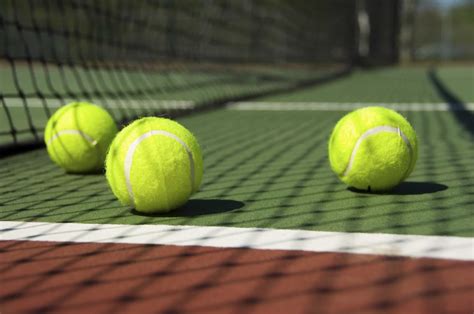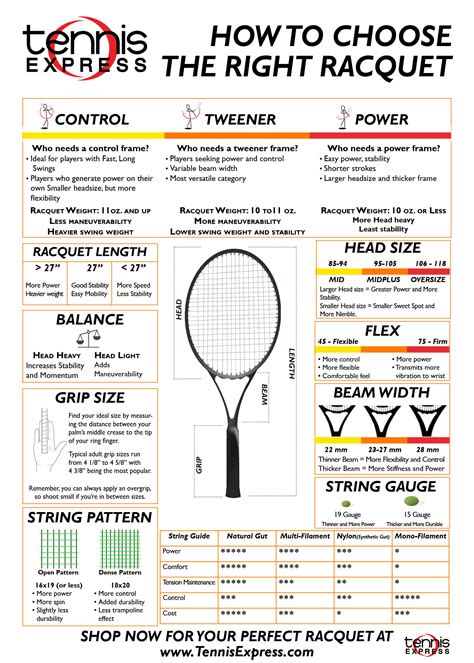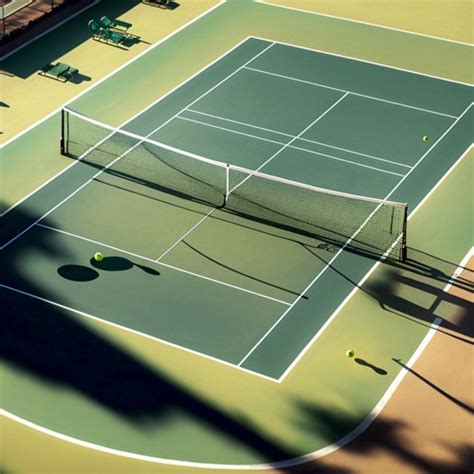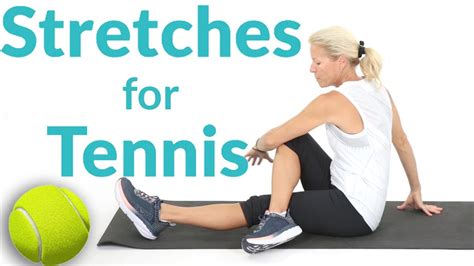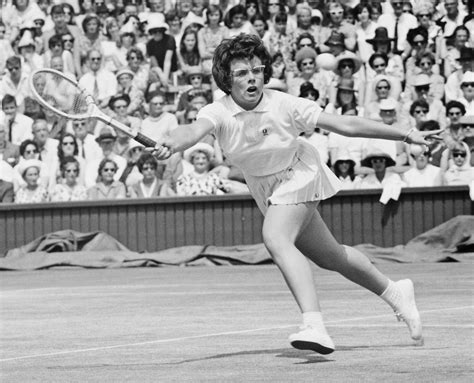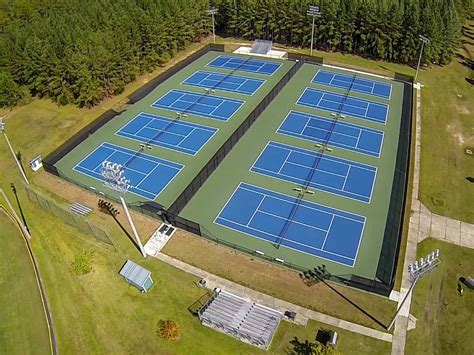Discover essential tips for selecting the right tennis lessons, from assessing skill levels and setting goals to finding qualified coaches and understanding class types.Are you eager to elevate your tennis game but unsure where to start? Choosing the right tennis lessons can make a significant difference in your journey from novice wannabe to confident player. With a wide range of options available, understanding your skill level and defining clear goals is essential for selecting the most effective training. Additionally, researching local coaches and evaluating their qualifications can help you find an instructor who resonates with your style of learning. From group classes to private sessions, there’s a right fit for everyone, as well as factors like budget and scheduling to consider. In this article, we’ll guide you through the most important aspects to help you choose the perfect tennis lessons tailored just for you. Let’s serve up some expert insights!
Understanding Your Skill Level For Tennis Lessons
Before enrolling in tennis lessons, it’s crucial to have a clear understanding of your current skill level. This awareness helps you find the right instruction that caters to your needs and accelerates your improvement. Here are some aspects to consider when assessing your skill level:
Additionally, it can be helpful to self-evaluate by analyzing your playing history, watching your performance in matches, or even having a coach assess you briefly before formal lessons begin. Understanding your skill level is the first step toward choosing the perfect tennis lessons tailored to your needs!
How To Define Your Goals For Tennis Improvement
Defining your goals is crucial in your journey to improve your tennis skills. Whether you’re a beginner or an experienced player, having clear objectives helps you stay focused and motivated. Here are some steps you can take to effectively define your goals for tennis improvement:
- Assess Your Current Skills: Evaluate your strengths and weaknesses in tennis. Identify specific areas where you would like to improve, such as serving, volleying, or court positioning.
- Set SMART Goals: Create goals that are Specific, Measurable, Achievable, Relevant, and Time-bound. For example, instead of saying I want to get better at serving, specify I want to improve my first serve percentage to 70% in three months.
- Consider Competition: Think about whether you want to play competitively. If so, set goals related to match performance, rankings, or participating in local tournaments.
- Incorporate Fitness Goals: Tennis is a physically demanding sport. Setting fitness-related goals, such as improving endurance or strength, can complemented your tennis training.
- Be Flexible: As you progress, your goals may change. Regularly review and adjust them based on your current performance and aspirations.
Having well-defined goals provides a roadmap for your tennis journey, helping you select the right lessons and coaches that align with your aspirations. Remember, the process of improvement in tennis is as important as the destination itself.
Researching Local Tennis Coaches And Their Qualifications
When it comes to selecting a tennis coach, conducting proper research is essential to ensure you’re making the right choice for your development. Here are some key points to consider while exploring your options:
- Check Credentials: Look for coaches who have professional certifications from reputable organizations, such as the US Professional Tennis Association (USPTA) or the Professional Tennis Registry (PTR). These credentials indicate a certain level of expertise and knowledge in coaching techniques.
- Review Experience: Consider the coach’s experience level, especially in teaching students of your skill level. A coach with years of experience in teaching beginners will have a different approach than one who primarily works with advanced players.
- Seek Reviews and Testimonials: Online reviews and testimonials from former or current students can provide valuable insight. Look for coaches who have positive feedback regarding their teaching style, communication skills, and their ability to achieve results.
- Observation: If possible, attend a few of the coach’s lessons or clinics. This first-hand observation can help you assess their coaching style and how they interact with students, giving you a better idea of whether their approach aligns with your learning style.
- Specialization: Some coaches specialize in certain areas, such as youth training, competitive play, or adult lessons. Make sure to find someone who aligns with your personal goals in tennis.
- Communication Skills: Effective communication is crucial in a coaching relationship. A coach who can clearly convey techniques and provide constructive feedback will greatly enhance your learning experience.
Taking the time to thoroughly research local tennis coaches and their qualifications will help you make an informed decision in choosing the right coach for you. This step is crucial in your journey of understanding how to improve your tennis skills and reach your personal goals.
Evaluating Class Types To Find Your Best Fit
When considering how to select the ideal tennis lessons, it’s crucial to evaluate the different class types available in your area. Each class type caters to different learning styles, skill levels, and objectives, so understanding these variations can help you make an informed decision.
Here are some common class types to consider:
- Group Lessons: These classes offer a budget-friendly option and allow you to learn alongside peers. They can foster a sense of community and allow for peer learning. However, individual attention from the coach may be limited.
- Private Lessons: If you prefer a personalized approach, private lessons may be the best choice. They allow for tailored instruction focused on your specific needs and goals, making them ideal for quick advancement. Keep in mind that they can be more expensive.
- Specialized Clinics: Many coaches offer specialized clinics that focus on particular skills or aspects of the game, such as serving, volleying, or doubles strategy. These clinics can be perfect for refining specific skills and typically have a more focused curriculum.
- Junior Programs: If you’re looking for lessons for children or teens, many facilities offer programs designed specifically for younger players. These classes often include fun games and activities to keep kids engaged while they learn the fundamentals of tennis.
- Adult Leagues or Social Play: For adults looking to enjoy tennis in a more casual environment, leagues and social play might be an option. These formats can help you gain experience while making friends and having fun.
To find the best fit, consider what you want to achieve from your lessons. Are you looking for a fun social experience, or do you have specific skills you want to improve? Assessing your own preferences and objectives will guide you toward the right class type and help you make a decision on how to maximize your tennis education.
Considering Budget And Time Commitment For Tennis Lessons
When deciding on tennis lessons, two crucial factors to take into account are your budget and the time commitment required. Understanding these elements will help you make an informed choice that aligns with your lifestyle and financial situation.
First, assess your budget. Tennis lessons can vary greatly in cost depending on the coach’s experience, the type of lessons offered (private vs. group), and the location of the facility. It can be helpful to outline your budget in a simple table format:
| Lesson Type | Average Cost | Session Duration |
|---|---|---|
| Private Lessons | $50 – $100 per hour | 1 hour |
| Group Lessons | $15 – $30 per person | 1 – 1.5 hours |
| Clinics / Workshops | $30 – $60 | 2 hours |
Next, consider your time availability. How many lessons can you fit into your schedule each week? If your goal is to become proficient, regular practice is essential. Therefore, you may want to establish a balance that allows you to commit sufficient time to your training without overwhelming your other responsibilities.
It’s beneficial to create a schedule that outlines your potential lesson times alongside other commitments, helping you visualize how tennis lessons can fit into your life. By keeping your budget and time requirements in mind, you’ll be better positioned to choose the right tennis lessons that suit your needs.
Remember, it’s not just about how to spend your money and time, but also how to make the most of your tennis journey while maintaining a balance in your lifestyle.
Frequently Asked Questions
What should I consider when selecting a tennis coach?
Consider the coach’s qualifications, experience, teaching style, and communication skills. It’s crucial to find a coach whose teaching methods align with your learning preferences.
How do I determine my skill level before starting tennis lessons?
You can determine your skill level by considering your past playing experience, observing your current capabilities, and perhaps taking a short skill assessment with a coach.
Are group lessons or private lessons more effective?
It depends on your learning style and goals. Private lessons offer personalized attention, while group lessons can provide a fun social environment and opportunities to practice against different players.
What age is suitable to start tennis lessons?
There’s no specific age, but many children start around 4-6 years old. Adults can also start at any age, and lessons can be tailored to suit all skill levels.
How long should I commit to tennis lessons?
A commitment of at least a few weeks is recommended to begin seeing progress. Consistency is key, but you can adjust the frequency based on your personal schedule and goals.
What should I wear to my tennis lessons?
Wear comfortable athletic clothing that allows for movement, along with proper tennis shoes designed for support and traction on the court. Don’t forget to bring a water bottle to stay hydrated!
How do I set realistic goals for my tennis lessons?
Set specific, achievable, and measurable goals based on your current skill level. Discuss these goals with your coach to align your training sessions and track your progress over time.

